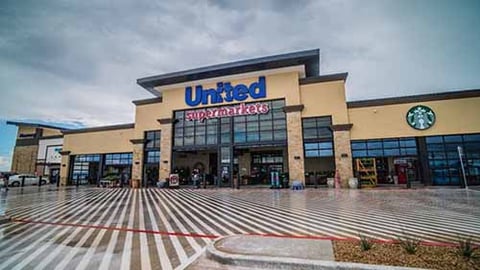Do Weight Loss Drugs Lead to Grocery Sales Losses?
As GLP-1 medications continue to gain users and traction, the drugs have been shown to have an economic impact on the food retailing business. That’s one conclusion from a new study published by Cornell University with data from consumer insights firm Numerator.
According to that study, those who use GLP-1 dugs, such as Wegovy and Ozempic, cut their grocery spend by about 6% during the first few months after starting their prescription, translating to $416 annually. The impact is even greater in higher-income households earning over $125,000, who reduce their grocery spending by 9%, or $690, annually.
Cutbacks are most common in categories that typically are driven by cravings, such as salty snacks and sweet baked goods, the researchers affirmed. “Interestingly, we do not observe statistically significant increases in spending on traditionally healthier products, such as fresh produce or whole grains, across all adopters. However, among weight-loss users specifically, there is a modest increase in spending on fresh produce and yogurt,” the team reported in their paper. “The primary dietary change appears to be a reduction in high-calorie items, which by construction shifts the proportional spending toward healthier options, even without a substantial increase in the quantity of those items. Essentially, the composition of their grocery baskets becomes healthier more by cutting back on unhealthy items than by adding more healthy ones.”
[RELATED: Conagra 1st to Add ‘GLP-1 Friendly’ Label to Food Packaging]
Using data from households with members who use GLP-1 drugs covered by their insurance programs or pay for the weekly pens for out of pocket, the study provided a comprehensive look at usage and purchasing habits. The researchers also sought to determine if dietary and purchase changes were more pronounced in the first six months of use; they found that the magnitude of spending reductions diminishes after six months, but the effects remain "statistically significant."
One key takeaway from the study is that the growing prevalence of Wegovy, Ozempic and other weight loss drugs presents both opportunities and challenges for the food industry. “Understanding these demand shifts is important for managers seeking to make strategic decisions in a landscape increasingly shaped by declines in food spending,” the researchers summed up in their conclusion.
Meanwhile, other new data underscores those opportunities and challenges. This week, Chicago-based insights company Circana released a report, "The Ripple Effect of GLP-1s, Today and In the Future," that also indicates that users make fewer food and beverage purchases during the first few months of drug usage and return closer to benchmark levels by the end of their first year on the medications.
According to Circana’s findings, these consumers spend more on foods that support their new lifestyles, such as eggs, nuts and vegetables and are eschewing fatty proteins, spicy food and beverages with added sugar.
“A deeper understanding of GLP-1 medications and their roles in weight loss has unlocked new opportunities to enhance the food, beverage, and nonfood products that support consumers’ overall well-being,” said Sally Lyons Wyatt, global EVP and chief advisor at Circana. “As accessibility, availability and affordability of these medications improve, it will become critical for companies to develop strategies that support consumers on their health journeys. For consumers needing help with getting to optimal GLP-1 levels, working with a medical professional to determine the right mix of medications, supplements, and/or CPG products will remain vital in managing their health over the long term.”
On that point, GLP-1-friendly items like ready-to-eat meals, portion-controlled snacks and high protein foods and drinks are posed for growth. There are implications in other categories, too, Circana’s researchers point out, noting that beauty, wellness and pharmaceuticals can experience a lift from consumers who are taking weight-loss medications.






